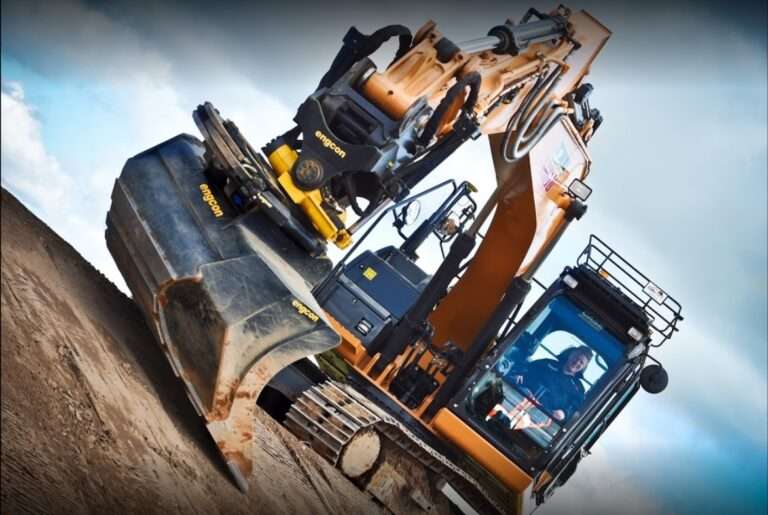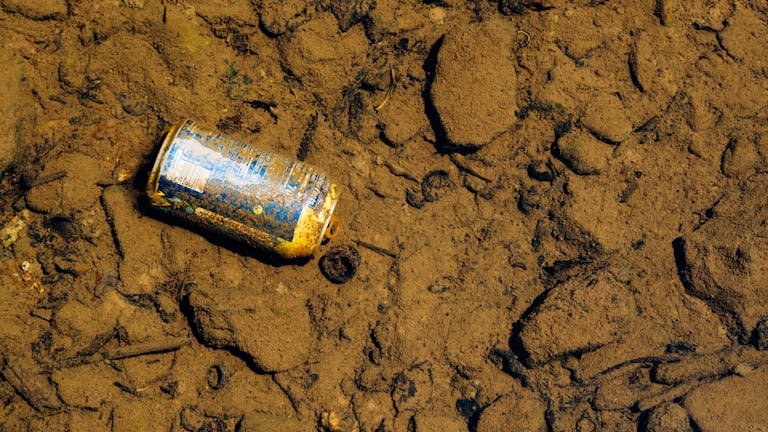Sustainable Earthworks: Recycling Materials and Reducing Carbon on Infrastructure Projects
Sustainability isn’t just a buzzword anymore – it’s the new baseline. Every infrastructure project in the UK, whether it’s a motorway upgrade, a new housing development, or a flood defence scheme, now has to prove its green credentials. Carbon reduction targets, waste minimisation, circular economy policies – they’re not optional extras.
And yet, when people talk about making construction greener, they often focus on the shiny bits – solar panels, electric machinery, recycled steel. The unsung part? The dirt. Literally.
Earthworks make up the bulk of early-stage construction, both in time and carbon output. Every load of soil moved, every tonne of aggregate imported, every truck journey adds up. Which is why sustainable earthworks – those that recycle site materials, optimise haul routes, and reduce embodied carbon – are quietly transforming the industry.
I’ve seen it first-hand. Projects that used to rely on endless quarry imports are now achieving 90% reuse of on-site material. That’s not just good for the planet – it’s good for budgets, too.
So, let’s dig into how it’s done.
Why Sustainable Earthworks Matter
Earthworks account for a surprising amount of carbon emissions in infrastructure. Think about it – hundreds of machines idling, trucks hauling material in and out, the diesel, the aggregates, the spoil disposal. It all adds up.
The Construction Leadership Council estimates that up to 40% of a project’s embodied carbon can come from earthworks and associated materials. That’s enormous.
And yet, most of it’s avoidable. Through smart design and clever reuse, you can cut that number in half. Sometimes more.
Sustainable earthworks mean fewer vehicle movements, less imported aggregate, and minimal waste to landfill. It’s about doing more with what’s already there.
| Source of Carbon in Earthworks | Typical Contribution (%) | Sustainable Mitigation |
|---|---|---|
| Material transport | 30–40% | Reuse site-won materials |
| Plant operation | 25–35% | Efficient equipment & GPS control |
| Imported aggregates | 15–25% | Recycled aggregates & stabilisation |
| Waste disposal | 10–20% | On-site treatment & regrading |
The goal isn’t perfection. It’s progress. Every reused tonne of soil, every optimised movement counts.
Recycling Materials – The Circular Approach
There’s something quite satisfying about turning what used to be waste into something useful. Soil that once headed for landfill can often be stabilised, screened, or blended to become structural fill. Rubble from demolition? Crushed, graded, and reused in haul roads or backfill.
It’s not new, but the technology and mindset around it have evolved.
In the past, recycled aggregates had a bad reputation – inconsistent quality, unpredictable performance. Now, with proper classification, testing, and on-site processing, they can match (and sometimes outperform) virgin materials.
I worked on a site a few years back where over 25,000 tonnes of excavated clay were lime-stabilised to create capping layers for access roads. No material left the site. None brought in. That’s a full circle – and the cost savings were impressive.
Common recycled materials include:
| Material | Typical Use | Carbon Saving vs Virgin Material |
|---|---|---|
| Crushed concrete | Sub-base & backfill | 40–50% reduction |
| Reclaimed asphalt planings | Temporary haul roads | 30–40% reduction |
| Stabilised clay or silt | Structural fill | 60% reduction |
| Screened topsoil | Landscaping & reinstatement | 20–30% reduction |
Recycling on site also reduces the environmental impact beyond carbon – fewer lorries on local roads, less noise, less dust.
Soil Stabilisation – The Hidden Hero
If there’s one technique that deserves more attention, it’s soil stabilisation. It turns marginal material – the stuff no one wants to touch – into usable engineering fill.
By mixing binders such as lime, cement, or ground granulated blast furnace slag (GGBS) into site-won soil, you can dramatically improve its strength and workability. What was once “spoil” suddenly becomes an asset.
And the carbon saving? Enormous.
Consider the footprint of importing thousands of tonnes of Type 1 stone compared to using what’s already under your feet. You cut transport miles, eliminate waste, and reduce the embodied energy of extraction and processing.
There’s also a time saving. Stabilised soils can often be reused within 24 hours, keeping programmes on track even during wet conditions.
That’s why you’ll find stabilisation forming a cornerstone of technical earthworks. It bridges sustainability and performance, proving that green doesn’t have to mean weak.
Efficient Haul and Fuel Management
One of the easiest wins in sustainable earthworks is cutting unnecessary movement.
Every extra metre a dumper travels adds fuel use. Multiply that across a site and it’s staggering. That’s where digital design and GPS machine control come in – modelling the most efficient cut-and-fill balance before a bucket even touches the ground.
Modern software allows engineers to calculate the exact amount of material that needs to be moved, where it should go, and how best to get it there. Combine that with on-board telematics and fuel monitoring, and suddenly you can see where the inefficiencies are hiding.
Small adjustments – rerouting a haul road, reducing idling time, scheduling plant use more efficiently – can cut fuel consumption by 10–20%.
Not groundbreaking, perhaps. But meaningful.
Reuse of Excavated Material – From Waste to Resource
Traditionally, anything that didn’t meet specification got hauled off-site. But now, under the CL:AIRE Definition of Waste Code of Practice, much of that can be reused responsibly.
That means excavated clay can be stabilised and reused as engineered fill, topsoil can be screened and reused in landscaping, and crushed concrete can form road bases.
It’s a simple mindset shift: material is no longer “waste” unless it has to be.
Some contractors are even setting carbon budgets for their sites – measured in tonnes of CO₂ per cubic metre of material moved. Every reuse lowers the score.
It’s not perfect, and you still have to work within geotechnical limits. But when done properly, reusing materials is the single most effective way to slash emissions.
The Carbon Calculation – Measuring Impact
The tricky part with carbon is that you can’t see it. That’s why quantifying savings is so important.
The PAS 2080 framework gives a structured way to measure and manage carbon in infrastructure projects. It focuses on four main principles:
- Eliminate – avoid emissions through smarter design.
- Reduce – improve efficiency and optimise materials.
- Substitute – use low-carbon or recycled alternatives.
- Compensate – offset where unavoidable.
For earthworks, the focus is usually on the first three.
| Activity | Typical Carbon Output (kg CO₂e/m³) | Potential Saving with Sustainable Practice |
|---|---|---|
| Importing virgin aggregate | 20–25 | Up to 70% |
| Hauling material off-site | 10–15 | Up to 80% |
| On-site stabilisation | 5–8 | 50–60% |
| GPS-controlled excavation | 2–4 | 30–40% |
That’s not to say every project can achieve those numbers – but even a modest 20% reduction adds up when you’re moving hundreds of thousands of cubic metres.
Challenges in Implementing Sustainable Earthworks
It sounds simple on paper, but on-site it’s not always easy.
For one, quality control matters. Recycled or stabilised materials must meet engineering standards – otherwise you risk settlement, contamination, or structural failure.
Then there’s the weather. Rain can wreak havoc on moisture-sensitive soils, especially in stabilisation work. Timing is everything.
And let’s not ignore the cultural challenge. Some teams still see “recycled” as code for “inferior”. That’s changing, but slowly.
In my experience, the best results come when sustainability isn’t a bolt-on – it’s built into the project from day one. Designers, engineers, and contractors all speaking the same language from concept to completion.
Digital Earthworks and Data
Data is fast becoming the new soil sample.
3D terrain modelling, drone surveys, and machine telematics all feed into smarter, more sustainable decisions. You can measure fuel use per machine, compare GPS design models against actual levels, and track progress almost in real time.
That means no over-excavation, no wasted material, and no guesswork.
The combination of data and sustainability is where earthworks are heading next – and it’s changing how engineers think.
The Human Side of Sustainability
There’s also something worth saying about people. Sustainability isn’t just environmental – it’s cultural.
When site teams buy into the idea of reducing waste, it changes the atmosphere. Operators start planning their movements better. Engineers challenge design assumptions. Supervisors look for ways to repurpose material rather than skip it.
It’s the small day-to-day decisions that drive real change.
I’ve been on sites where sustainability was treated like a box to tick – and others where it was treated like a shared responsibility. The difference in outcomes couldn’t be clearer.
Looking Ahead – The Future of Sustainable Earthworks
The next step? Carbon-neutral construction isn’t some distant ambition anymore – it’s happening now.
Electric and hybrid plant machinery is becoming viable for large-scale projects. Hydrogen-powered excavators are in testing. Low-carbon cements and bio-based binders are emerging. Even AI-driven project management is helping cut waste before it starts.
And as regulations tighten, sustainable earthworks will shift from “nice to have” to “non-negotiable.”
The construction industry’s biggest opportunity to hit net-zero targets might not come from fancy materials or futuristic buildings. It might come from how we move and reuse the ground beneath them.
Conclusion
Sustainable earthworks are more than an environmental tick box – they’re a smarter, more cost-effective way of building the future.
By recycling materials, rethinking waste, and using technology to work more efficiently, the industry is proving that green construction doesn’t have to mean compromise.
It’s about looking at the soil under your boots and realising that almost everything you need is already there.
And that’s quite something.
Killingley Insights is the editorial voice of NT Killingley Ltd, drawing on decades of experience in landscaping, environmental enhancements, and civil engineering projects across the UK.








